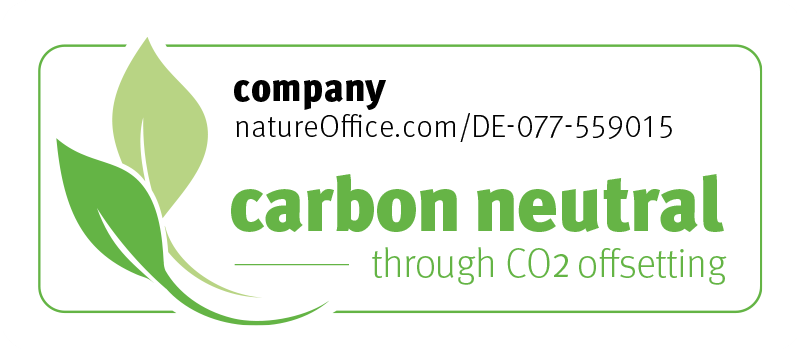Frequently asked questions about our products
Common questions to epoxy resins
A dull or sticky surface indicates excessive humidity during curing. Solve this issue by removing the affected layer and reapplying a new one at lower humidity.
The curing time of the epoxy resins depends strongly on the temperature. At low ambient temperatures (<18 ° C), the pot life and curing time are increased. At high ambient temperatures, complications may also occur as pot life and curing times decrease. We recommend ambient temperatures between 20 ° C and 25 ° C for optimal results. Even if the ambient temperature drops always work with the mix ratio specified in the technical data sheet as the optimum properties are achieved at the recommended mix ratio.
As a rule keep in mind to take as much resin as you take glass fabric by weight. So per 100 g of glass fabric you will obtained 0.1 mm thickness. Example: 280 g glass fabric with almost 280 g resin / hardener mixture results in a laminate of approx. 0.3 mm.
Common questions to Polyurethane Casting Resins
Never vary the ratio of resin and hardener as it will change the final properties of the material. The mixing ratio can not balance different ambient temperatures.
Always wear safety goggles especially when mixing or painting. Splashes can otherwise easily get in the eyes.
It is always recommended to wear gloves as contact with the skin may lead to allergic reactions that do not show directly after contact. A sensitization is the result.
When you have finished your work take off your jacket gloves and goggles and wash your hands thoroughly.
You should never eat or drink in the workshop. Keep food and chemicals separate.
For specific information on each of the products used please refer to the SDS.
In order to achieve a good bond a pre-treatment is essential. Depending on the material the pretreatment may include:
1. Degrease, remove dust
2. Roughen the surface
Regardless of the pretreatment it is very important that the surfaces to be bonded be joined as soon as possible after the pre-treatment. Make sure the surfaces are free of dust and Fingerprints.
ebaboard can be glued with our specially developed adhesive. Adhesive joints should ideally not be placed in the later field of vision as they may still be visible after processing and painting. The job is done best with a fine-toothed notched trowel. Then the plates are placed on each other and pressed together with clamps or a press.
For thick-walled components which were cast in several steps it can lead to delamination.
Please consider the following casting multi-layered build up:
1. The best solution is to pour on the not yet completely cured surface of the previous layer. That means the previous layer should still be sticky.
2. For hardened layers the layer to cast on should first be roughened and made free of dust and grease before another layer can be casted on.
Reasons for sink marks:
1. Shrinkage:
Sink marks usually appear in places on the part where various wall thicknesses are placed. For example ribs or other reinforcing geometries may then cause this defect. Likewise on very high wall thicknesses such a phenomenon occurs as well. The reason for this is the shrinkage behavior of the plastic.
To counteract this so-called “feeders” should be used which top up material into the mold. In addition this creates a slight casting pressure which counteracts the shrinkage. The feeders should have approximately the same diameter as the wall thickness of the component at this point.
2. Release agent:
Release agents can also cause sink marks. In the case of a release agent with a very good release effect it may happen that the component is already detached from the mold wall during curing in some places. At these spots the material can then freely disappear which leads to sink marks. We are happy to advise you on a suitable release Agent.
Reasons for softening in the polyurethane part:
1. Mixing ratio incorrect:
Too much resin or hardener can lead to a faulty curing reaction resulting in e.g. in soft spots. Therefore it is very important that the correct mixing ratio is maintained. To ensure this a suitable balance must also be used. The smaller the quantities used the more accurate the balance must be. At best to 0.00 g. The balance should additionally be regularly calibrated.
2. Mixing error:
Inadequate mixing can also lead to softening. Therefore it is important that the components are sufficiently mixed. For systems with appropriate pot life the mixing time should be about 3 minutes. After half of the mixing time the bottom and the wall of the mixing vessel should be stripped with a spatula before mixing is continued. For mixing we recommend a star stirrer.
If you want to use fast casting resins with a certain amount of filler we recommend to split the amount of filler. Weigh all ingredients exactly then mix half of the filler in the resin and the other half in the hardener. Finally the now filled components may be mixed together.
Every PU system will shrink during crosslinking. PU systems cure with an increasing core temperature. This means that heat is released during crosslinking. Crosslinking sections cooling down lead to a volume shrinkage. The extent of volume loss is influenced by several factors:
1. The shrinkage depends on the contour and wall thickness of the parts. The data sheet tells you shrinkage values which were measured at a specified geometry in the lab and are only to be taken as an orientation value. The shrinkage can vary depending on the part geometry.
2. Fillers: Unfilled systems have higher shrinkage values than filled systems. By adding filler the shrinkage can be reduced. Please note that filler also affects the mechanical values.
Reasons for embrittlement:
1. The material is not sufficiently crosslinked. This can occur by processing at too low temperatures. The processing temperature should always be between 20 – 25 ° C. Resin and hardener as well as the mold must be brought to this temperature. Some materials also request a post tempering to obtain the mechanical values from the data sheet. The appropriate tempering can be found in the technical data sheets.
2. Early demoulding: Some materials have a so-called brittle phase during curing. At this stage, the material is very fragile. Therefore, components should not be demolded early. The demolding times can also be found in the technical data sheets.
Hard polyurethanes can be painted but the surface to be painted must first be correctly prepared. If you want to paint components no silicone-containing release agent should be used in the production. Silicone-based release agents are difficult to remove from the surface of your polyurethane and thus prevent adhesion of the paint on the component.
Before painting the surface should be slightly roughened (for example with sandpaper) and cleaned with e.g. silicone remover.
For coloring PU systems, we recommend the use of our color pastes. In this case, a maximum addition of 2% should not be exceeded since otherwise the mechanical properties of the plastic may Change.
PU systems mostly have an isocyanate hardener. Some of these hardeners (usually component B) have a melting point in the range of room temperature (RT). If these are stored longer below RT (for example by transport in winter) crystallization occurs and the liquid becomes solid. This crystallization can be re-liquefied by heating to about 60 ° C for about 45 min. Then the hardener should be stirred well once.
Use of the hot hardener is not recommended as the pot life of the system will be shortened. Therefore, the recrystallized hardener must be cooled to RT again before use.
The “freezing” and “melting” have no adverse effects on the product.
There are two crucial points leading to air entrapments:
1. Air introduction when mixing:
Air was introduced by mixing the components. This can be caused by choosing the wrong mixer. We recommend using a star-shaped mixer. On the other hand, air may have been introduced by a wrong mixing procedure. It is recommended to leave the stirrer inside the material as close as possible to the bottom of the container. Pulling out the mixer during the mixing process is to be avoided. So the mixer should be pulled out only after standstill.
2. Moisture:
PU materials are sensitive to moisture. If PU casting compounds come into contact with water or are exposed to very high humidity, the material will foam. The structure of the solid PU’s is then full of air entrapments or foamy. To avoid moisture, the containers should always be kept well closed and stored in a dry place. High humidity should be avoided during processing.
The materials should be stored on pallets weatherproof at room temperature. It is not recommended to store the materials directly on concrete or cold surfaces.
Common questions to silicones
Make sure that it is always hardened material which you want to dispose of. Hardened material can be disposed of as residual waste. Liquid residues are defined as special- or hazardous – waste. Make sure to consult the SDS and follow the recommended disposal procedures.
The reaction rate of addition crosslinking silicones can be increased via platinum accelerators, thereby ensuring crosslinking at temperatures below 20 ° C. If the ambient temperatures is too high, the reaction can be slowed down using a retarder. For condensation curing silicone systems, the reaction time can be shortened by increasing the amount of crosslinker. The mixing ratio must not be changed. Crosslinkers for different processing times are also available for some silicone systems. It is essential to consult the technical data sheet in advance.
The service life of silicone moulds is heavily dependent on the casting resin used. Slow hardening casting resins attack the mold surface more strongly. By using silicone systems with oil-curing crosslinkers or by using silicone spray before each casting, the service life can be extended. For molds with a hardened surface, the mould may be slightly regenerated by storage in silicone oil at 40°C – 80°C for 4 – 8 hours.
It is highly advisable to evacuate the air trapped in the mixing process by evacuation.
If no vacuum chamber is available, you can also proceed as follows:
First, a small amount of silicone is mixed and applied with a brush as a 1-2 mm thick layer on the original. Allow this layer to rest at room temperature until the surface is substantially free of bubbles and has crosslinked. Then the remaining amount of silicone is mixed and thus poured onto the mould.
There are two types of silicone rubber chemistry
1. Addition curing silicones
can be accelerated chemically by addition of platinum accelerator or by an increase of the curing temperature. Detailed information can be found on the TDS of the product
2. Condensation curing silicones
can be accelerated in part by increasing the amount of crosslinker. This may change the properties of the cured silicone. An increase in curing temperature does not accelerate the cure of condensation curing silicones. Detailed information can be found on the TDS of the product.
When processing silicone products, the protective measures recommended by the professional association of the chemical industry should be observed. We recommend wearing safety goggles and disposable gloves.
All addition curing silicone elastomers are susceptible to inhibition of crosslinking when in contact with certain materials and chemicals. Inhibition occurs when the elastomer is only partially cross-linked after 24 hours or when the contact surface with another material is tacky. Materials containing amines or sulfur compounds and non-ferrous metals have a particularly strong inhibiting effect, as do organotin compounds in condensation-curing silicone rubbers. It is advisable to examine mixing containers, molding boxes, originals and release agents for inhibiting effects before processing.



